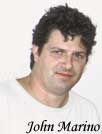 Gov. Calderón's highly anticipated Cabinet shake-up, officially announced at a press conference late last week, left her administration looking in greater disarray than at any time during her 18 months in power. Gov. Calderón's highly anticipated Cabinet shake-up, officially announced at a press conference late last week, left her administration looking in greater disarray than at any time during her 18 months in power.
Ironically, it was timed to coincide with one of the dreariest "viernes social" - the extended happy hour beginning after work on Friday that Puerto Ricans have made a tradition - in recent memory. It was the day that the Calderón administration's tax hikes on beer, wine and other alcoholic beverages went into effect. (At one watering hole frequented by this writer, the price of a Heineken skyrocketed by 33 percent to $2 from $1.50 as a result.)
The appointment of Popular Democratic Party Secretary General Jorge Colberg Toro to a newly created post in charge of government communications is an indication that Calderón is already looking ahead to a tough reelection battle in 2004 and does not particularly like what she sees. While she bristled at press suggestions that he would assume a role previously filled by Alberto Goachet during the administration of former Gov. Pedro Rosselló, the truth is the position should have never been left vacant during her first 18 months in power - even if this administration has rightly curtailed local government advertising expenses, which tallied about $100 million during the first four years that Rosselló served as governor.
The "resignations" of five other Cabinet members brought a slew of other changes, although nobody believes that the outgoing agency chiefs were not fired. At the Agriculture Department, Luis Rivera Cubano, the former Lands Authority head, took over for Fernando Toledo, while former Financial Institutions Commissioner Antonio Faria took over the Economic Development Bank from Maria Fuentes Pujols.
The resignation of Office of Drug Control Director Osvaldo Cianchini was also announced at the press conference. He was replaced by Ponce District Attorney Luis Guillermo Zambrana. Cianchini officially resigned for health reasons, but speculation has it that he too was encouraged to leave because of job performance.
The former Carolina Drug Court judge was quietly and methodically working with mayors across the island to develop strategies to fight drug dealing and drug use, and the efforts appeared to be just bearing fruit, with the implementation of new promising programs in island towns.
But after spending the initial months of her administration battling to justify the $5 million seed money used to create the office, this steady pace of work may not have been enough for the governor. Calderón also expended an extraordinary amount of political capital defending her first pick for the office -Jorge Collazo - who was forced to withdraw his name for consideration after admitting his participation in the compiling of secret dossiers on independence supporters as a young police officer. This too added to the expectations of what this official - commonly known as a "drug czar" -- would be able to do.
The most criticized change, however, was the dual resignation of Planning Board President Hermengildo Ortiz Quiñones and his right hand Félix Aponte. Calderón might as well have publicly stated that she fired the pair (how else would their dual resignation be so well-timed to dovetail with the other Cabinet changes?) But she declined to do so.
Press speculation centered on the fact that the men, both well-respected planners, might have won Calderón's ire by aggressively battling the Navy when it asked for a certificate that its training on Vieques conformed with Puerto Rico's Coastal Zone Management Plan. Although the training clearly did not, raising a fuss about it was basically fighting a losing battle since under federal law the Navy only has to try its best to conform to local coastal environmental laws.
Environmentalists expressed greater concern that the men were ousted because they were too careful with environmental issues when considering new construction projects. The fact that Ortiz Quiñones was being replaced by Permits and Regulations Administration Director Angel Davíd Rodríguez only added to this perception. In the days following the press conference, Economic Development and Commerce Secretary Ramón Cantero Frau said that the slow pace that the Planning Board was approving projects had started to hurt the economy - a clear dig at the ex-Planning chief.
More disturbing is the fact the Ortiz Quiñones was in charge of a sweeping government revision of permitting regulations that was supposed to streamline the permitting process without gutting environmental safeguards. The status of the project now appears to be very much up in the air.
Lost in the debate too is the role of the Planning Board in the Puerto Rico government. It was designed to be an independent arbitrator that would ensure proper planning free from the influence of developers and the administration in power. The dual resignation of its two top officials, announced at a press conference with a host of other Cabinet changes, reveals the Board to be clearly under the control of the administration in power.
It may be that the governor has simply fine-tuned her staff, and that the administration is now set to move more efficiently than ever towards its goals. But in the aftermath of last week's Cabinet shake-up, it appears as if the government transition is still in process, a full 18 months after the administration took power.
John Marino, City Editor of The San Juan Star, writes the weekly Puerto Rico Report column for the Puerto Rico Herald. He can be reached directly at: Marino@coqui.net |

